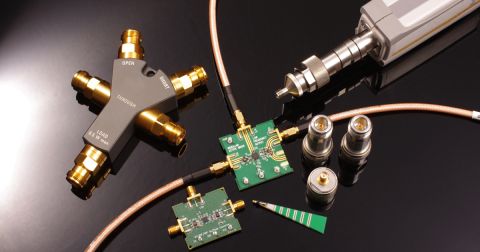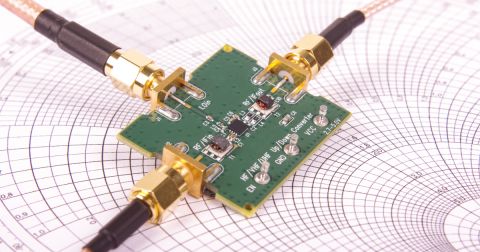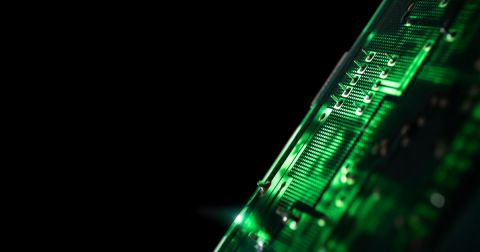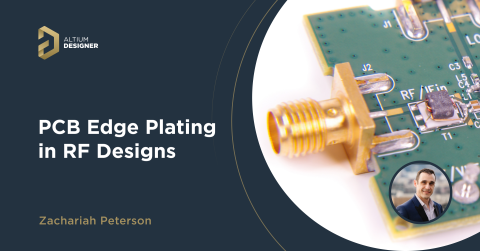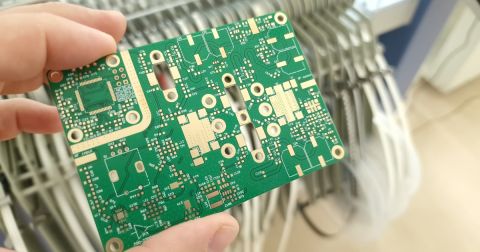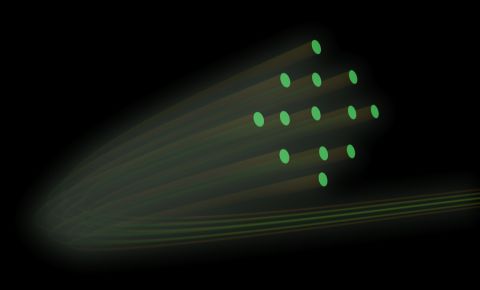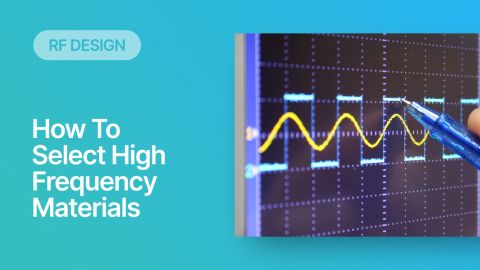MIMO Antenna Design and PCB Layout Tips

Multiple-input multiple-output (MIMO) has become a more popular term now that 5G is becoming more publicized, but this term and the technology have been around for awhile. MIMO can be traced all the way back to research papers from the 1970s, and significant development was required before the technology could be commercialized. Recently, the drastic increase in wireless services direct to consumers and in offices has been enabled by MIMO.
If you’re designing RF products to support telecom or networking infrastructure, then there’s a chance you’ll need to design your product to support MIMO. Part of this is a component selection task as you need to select a set of baseband transceiver/conversion ICs to support MIMO. The other part of this is a layout task in order to support multiple antennas required in MIMO.
What is MIMO?
Multiple-input multiple-output (MIMO) supports the use of multiple data streams being sent between a transmitting device and a receiving device. When two MIMO-capable devices are connected, multiple data streams can be transferred between them in parallel within the same channel. This effectively increases throughput without taking up additional frequency bands.
Most MIMO-based systems (including smartphones) include an antenna array that provides highly directional emission over multiple channels. For example, the 4x4 cellular MIMO array shown below (4 Tx and Rx antennas) was used in the iPhone back in late 2018. In this example, 4 channels are being used to transmit and receive data. Later research focused on the use of MIMO in handsets with 8 antennas, which may have multiple resonant frequencies to enable wideband operation. Two example articles can be found below:
Take a look at the articles below for some example MIMO antenna designs:
- Li, R., et al. "A low-profile and high-isolated MIMO antenna for 5G mobile terminal." Micromachines 11, #4 (2020): 360.
- Ding, Z., et al. "An eight-port dual-band antenna array for 5G smartphone applications." In 2018 Cross Strait Quad-Regional Radio Science and Wireless Technology Conference (CSQRWC), pp. 1-2. IEEE, 2018.
Example MIMO Array With Flip Chip Transceivers
The image below shows an example MIMO antenna concept with a 4x8 antenna arrays. This array is feed with a group of transceivers on the back side of the board, where the chips form a pair of 2x2 transceiver arrays. In other words, the chips each cover a single 4x4 array (4 Rx and 4 Tx). These arrays are fed through the back side of the board using through-hole vias, which if properly constructed, can pass mmWave signals to a load.

There are different flavors of MIMO, which basically refers to the number of users receiving data from a MIMO transmitter. Single-user MIMO (SU-MIMO) and multi-user MIMO (MU-MIMO) are as their names describe, where single or multiple users take advantage of available MIMO resources to receive data. 5G takes MIMO to a new level, with base stations employing massive MIMO to serve a huge number of subscribers and smart devices. Current towers simply can’t fit the required number of antennas to support massive MIMO, which is one reason tower counts for 5G networks are projected to reach ~10 million.
How MIMO Is Implemented
How is MIMO implemented in these arrays? The answer lies in three broad classes of multiplexing methods:
- Spatial multiplexing: This encompasses many methods Beamforming is used within subarrays such that a subgroup of the antennas are transmitting/receiving in only one direction, i.e., with only a single device at the other end of the channel. The other possibility is that multiple streams
- Time-division multiplexing (TDM): This older method involves broadcasting into different channels in different time windows. It is very simple to implement as it only requires queuing up different data streams into fixed time windows, but this reduces throughput because channels are not being broadcasted simultaneously unless also spatially multiplexed into different arrays.
- Frequency-division multiplexing (FDM): This involves broadcasting different data streams over different frequencies within a channel. The most common example of FDM usage is in television and radio broadcasts, where the target frequency is extracted from the received signal by demultiplexing and passing the signal through a filter.
Today, we use a combination of these methods with breamforming in phased arrays to provide directional transmission of data in multiple data streams. In 5G, beamforming is being used to overcome the higher losses at higher frequencies, but it is combined with spatial multiplexing into sub-arrays and orthogonal frequency division multiplexing to send different channels to different users. All of this is time-multiplexed into different time windows.

MIMO Antenna Design in Your PCB
Devices that implement MIMO functionality are getting smaller, and the digital section is being packed into the same board or assembly as the RF section. In these devices with a MIMO antenna array, the result is that the array could emit directly into your digital section and create noticeable interference on low-level digital lines. The amount of noise you could expect to receive depends on:
- Direction of the broadcast beam
- Placement of the antenna near digital interconnects
- Any isolation implemented around the antenna array
Antenna Beamforming Method
The beamforming method used in a MIMO-capable system can be digital, analog, or hybrid. Analog beamforming follows the typical procedure with phased array layout and a phase shifting transceiver, while digital beamforming eliminates some of the complexities in layout and routing in the PCB. Hybrid beamforming can be used to mix analog broadcast with digital pre-coding, which reduces the processing load and makes PCB layout somewhat easier. These methods might also be implemented in perpendicular polarization directions, so you effectively double the device's data throughput.

Either of these methods (or hybrid beamforming) can result in radiation being emitted towards a digital section of the PCB, where it could then be received and seen as crosstalk in an interconnect.
Antenna Placement
Antenna placement around other components is the primary domain of the PCB designer and it depends on things like stackup, component selection/placement, grounding strategy, and routing. Antennas are normally placed at the edge of the board to separate them from digital components by as much as possible, or the major portions of the digital section will be placed on a different board. Placement could also result in crosstalk when the antenna is broadcasting, as outlined in the video snippet below.
Normally we only concern ourselves with digital crosstalk into analog channels, but the reverse can happen as well; the most well-known example is switching regulator noise appearing on digital channels. In the image below, a large phased array is placed along the edge of a board in a 5G handset. As the beam angle tilts closer to the surface of the board, we can see very clear crosstalk in nearby digital channels, as evidenced in the eye diagram. The result is greater variance along the rising edge (more jitter) and more noise at each signal level, resulting in larger bit error rates.

Thanks to Juliano Mologni from Ansys for this excellent graphic.
Antennas in a MIMO-capable system need to be isolated from each other as well as other circuit blocks. The typical design goal is at least 20 dB isolation between antenna feedlines (defined as insertion loss between two antenna lines). Crosstalk is the major factor here as you do not want to have the signal in one antenna line corrupted by a signal in a neighboring line, especially because these analog signals requrie a specific phase relationship for accurate beamforming.
There are a number of ways to do this. The poor man’s method is to place shielding cans; some radio baseband ICs already reside under some shielding to suppress radiated noise from digital circuits or other analog components. A more sophisticated method beyond guard vias/traces is the use of electromagnetic bandgap structures, which are desirable for higher frequency systems. Coplanar waveguide or stripline routing are also preferred.
The example below shows one option for implementing a standard 4-element antenna system, but with substrate integrated waveguides used instead of coplanar waveguides as would be typically done in radar. Radar systems that want to scale into >300-400 virtual elements are starting to adopt this type of antenna array to provide much greater antenna counts, which would give higher resolution that would be suitable for imaging. You can read about this type of antenna in the following article:

When you’re ready to place your antennas and build the physical layout for your MIMO-capable system, use the complete set of product design tools in Altium Designer®. The CAD features in Altium Designer enable all aspects of systems and product design, ranging from packaging and PCB layout, and up to harness and cable design. When you’ve finished your design, and you want to release files to your manufacturer, the Altium 365™ platform makes it easy to collaborate and share your projects.
We have only scratched the surface of what’s possible with Altium Designer on Altium 365. Start your free trial of Altium Designer + Altium 365 today.


